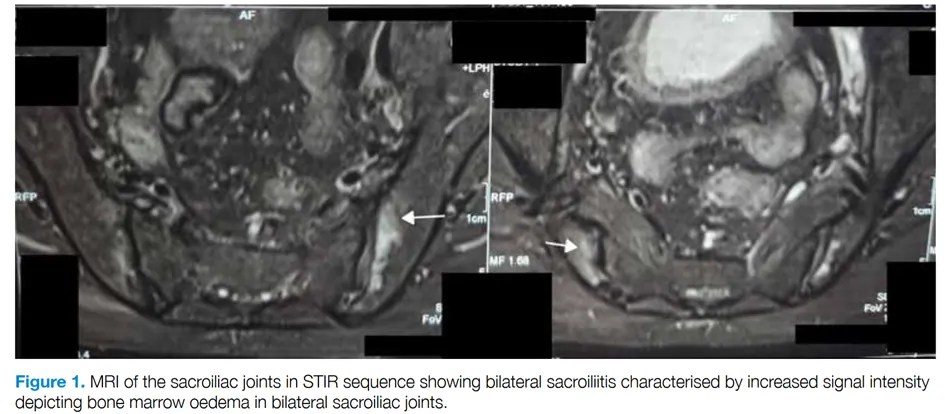Article title: Neurological manifestations in patients with VEXAS syndrome
First author: Charlotte Bert-Marcaz
Journal: J Neurol
Link to the article: https://pubmed.ncbi.nlm.nih.gov/39891740/
Author of the abstract: Philippe Mertz

VEXAS syndrome (Vacuoles, E1 enzyme, X-linked, Autoinflammatory, Somatic) is an autoinflammatory disease linked to somatic mutations in the *UBA1* gene. It mainly affects men over the age of 50 and is characterized by systemic inflammation, hematological abnormalities, and skin manifestations. However, its neurological involvement, both central and peripheral, remains poorly understood and is likely underdiagnosed.
This multicenter retrospective study analyzed the neurological manifestations of patients with VEXAS included in the French national registry between November 2020 and March 2023. Of the 291 patients in the registry, 17 (6%) had neurological involvement. Thirteen additional cases were identified through a national call for observations, bringing the total to 30 patients. All were men, with a median age at diagnosis of 70 years (IQR: 68–77). The most common *UBA1* variant was *p.Met41Thr* (63%).
Five patients (17%) presented with initial neurological manifestations (3 PNS, 2 CNS), but none had isolated neurological involvement at baseline. The median time between VEXAS diagnosis and the first neurological involvement was 32 months (IQR: 18–48) for PNS and 17 months (IQR: 2–31) for CNS.
PNS involvement affected 70% of patients and included polyneuropathies, cranial nerve involvement, and multiple mononeuropathies. CNS involvement (30% of cases) included encephalopathies, lacunar infarcts, PRES syndrome, and optic neuritis. No patients had concomitant involvement of both systems, although several developed different neurological manifestations during the course of the disease. Ocular involvement (scleritis, episcleritis, anterior uveitis, periorbital inflammation) was more common in the PNS group (p = 0.045).
Among the 15 patients who underwent lumbar puncture for CNS involvement, 6 (60%) had hyperproteinorachia (>0.45 g/L) and 1 (10%) had pleocytosis (>5/mm³). Brain MRI (15/15) showed leukopathy (81%), ischemic lesions (40%), vasogenic posterior edema (19%), or pachymeningitis (7%).
Among the 24 patients who underwent lumbar puncture in cases of PNS involvement, 8/9 (89%) had hyperproteinorachia and none had pleocytosis. All patients who underwent electromyography (17/17) had nerve conduction abnormalities.

Corticosteroid therapy led to an improvement in neurological symptoms in 68% of cases. Some conditions responded very well: cranial nerves (86%), non-length-dependent polyneuropathies (75%), optic perineuritis (100%), lacunar infarcts (100%), and encephalopathy (100%). In four cases, the condition resolved spontaneously (one cranial nerve disorder, one lacunar infarction, two PRES). Conversely, polyneuropathies were often resistant (56% stable, 33% worsened). Corticosteroid-sparing treatments (ruxolitinib, azacitidine, tocilizumab) were used. Mortality was 30% after a median follow-up of 4 years, mainly due to infectious and cardiovascular complications.
In conclusion, neurological involvement in VEXAS is rare (6% of the cohort) but probably underdiagnosed. It is the initial presentation in nearly 17% of cases and is always associated with other signs of VEXAS. PNS involvement is more common than CNS involvement. The good response to corticosteroids in the majority of cases suggests a direct link between these manifestations and VEXAS. Systematic screening could allow for earlier and more appropriate management.
*PNS: Peripheral nervous system
*CNS: Central nervous system



